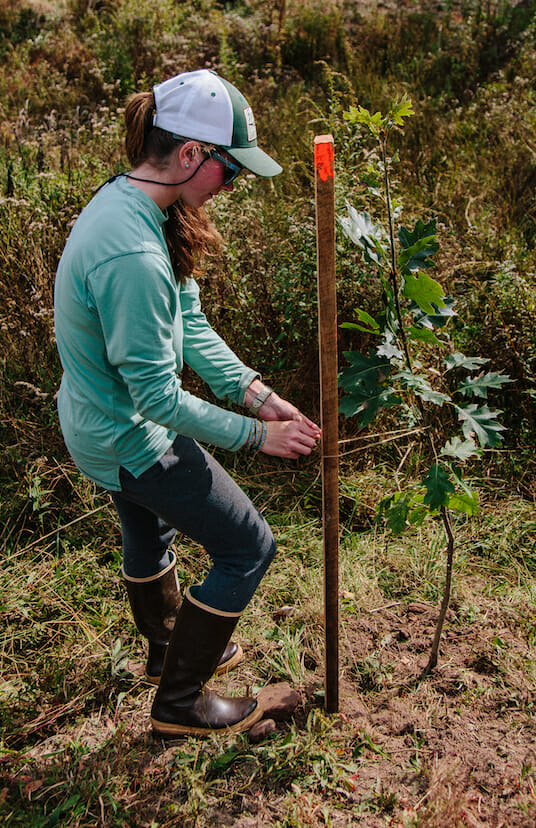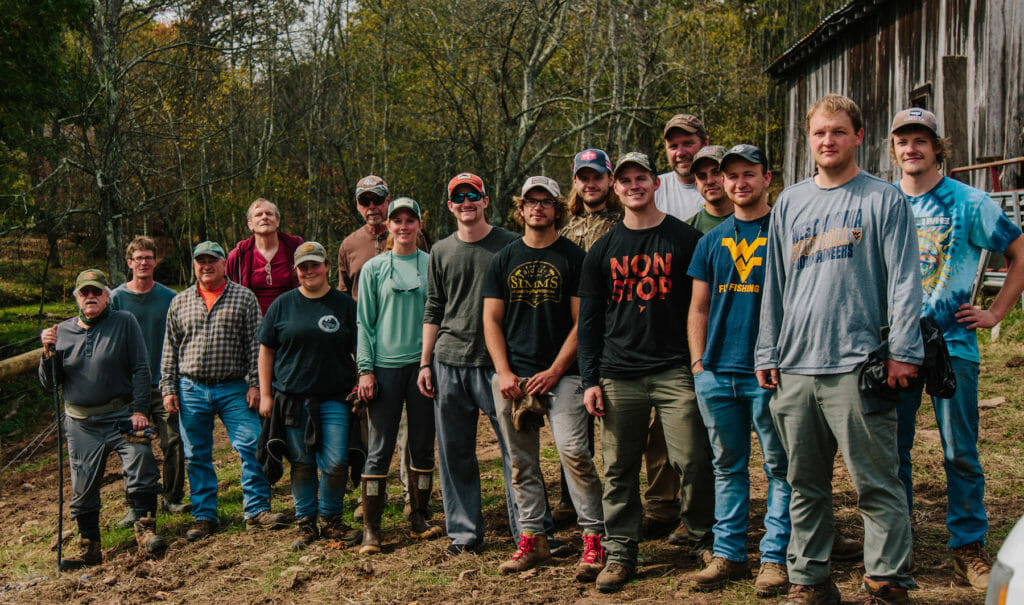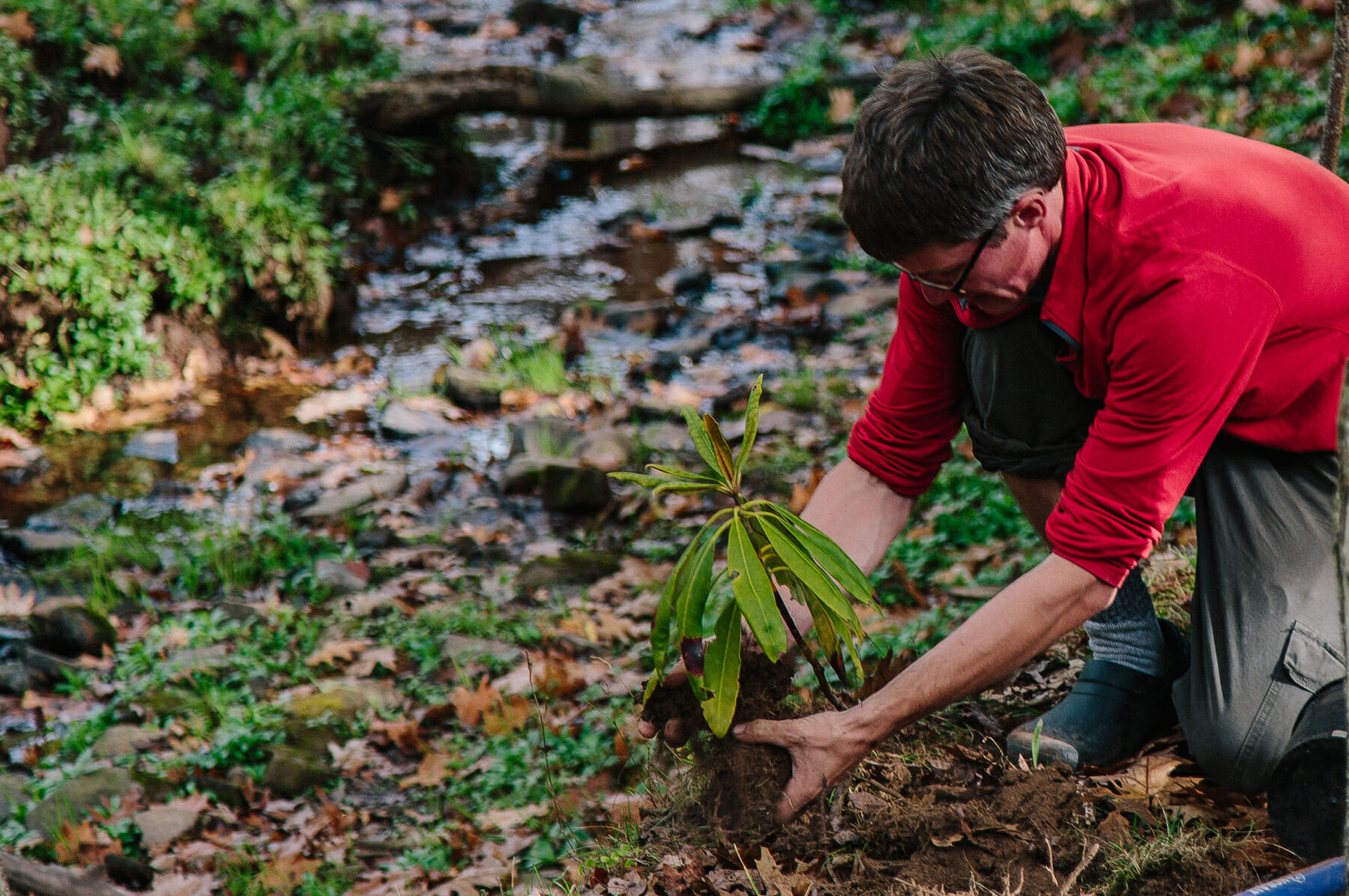By Seth Moessinger
On Sunday October 13, five neighboring chapters of Trout Unlimited joined forces to help restore important riparian habitat along Crabtree Creek within Western Maryland’s Savage River watershed.
The watershed supports the largest population of native eastern brook trout in the state and is managed by the Maryland DNR as a zero-creel limit, artificial-lure-only brook trout stronghold. It is a true gem of the Mid-Atlantic.
With a palpable spirit of camaraderie, members of the Nemacolin, Youghiogheny, P. Pendleton Kennedy, and both the Frostburg State and West Virginia University 5 Rivers chapters of TU all came together to plant 155 large potted trees.
TU chapters were also joined by Maryland DNR Fishing and Boating Services staff and students from the Natural Resources and Wildlife Technology Program at Garrett College to get the job done quickly.
Excitingly, the tree planting event is part of an effort led jointly by the Nemacolin Chapter of TU and TU’s brand-new Western Maryland Initiative (WMI) to restore critical spawning habitat within the headwaters of Crabtree Creek.

Morgan Stum, president of the Frostburg State University 5 Rivers Chapter, plants an oak sapling alongside a small Maryland stream that harbors native brook trout. (Dan Zazworsky photos)
With funding and material support from TU’s Embrace A Stream Grant Program, the USFWS Partners for Fish and Wildlife Program, the Maryland DNR Fishing and Boating Services, the Chesapeake & Atlantic Coastal Bays Trust Fund, and a donation from The National Capital Chapter of TU, the project is assisting two conservation-minded landowners in improving agricultural practices along approximately 2,000 feet of streambank.
Ultimately, the project will exclude livestock from 1,000 feet of streambank and restore native forested buffers to about two acres of streamside land. Importantly, the project complements ongoing efforts by WMI and a broad coalition of local, state, and federal conservation partners to restore brook trout habitat in Maryland’s westernmost counties.
To date, TU and its partners have contributed considerable time and effort to ensure that the Crabtree Creek restoration project is a success.
This summer, Nemacolin Chapter members diligently collected water samples and conducted monthly pebble counts to paint a picture of habitat conditions in Crabtree Creek prior to restoration activities. The data will allow partners to quantify changes in stream substrate composition following restoration as the coarser pebbles and gravels so important to brook trout begin to replace the fine silts that so often smother their reproductive success.
In addition, WMI and Maryland DNR staff conducted pre-restoration fish population surveys to document brook trout presence/absence and to calculate an index of biotic integrity (IBI) for the restoration site. By comparing the restoration site to biologically intact reference sections of stream elsewhere in the watershed, the partnership can track improvements in native fish species diversity now that livestock have been successfully excluded from the reach.

In the weeks prior to our October tree planting event, the partnership was successful in hiring both excavating and fencing contractors to effectively limit access by cattle to Crabtree Creek. Although there is always more to be done, at least for one section of stream, our work is almost finished.
We look forward to next year when the partnership will revisit the site to plant additional native trees and shrubs and begin collecting the post-restoration data so important in telling our story, a story of building long-term resiliency for brook trout populations in Western Maryland.
Seth Moessinger is Trout Unlimited’s Western Maryland initiative coordinator.



